
kscarbel2
Moderator-
Posts
18,885 -
Joined
-
Days Won
114
Content Type
Profiles
Forums
Gallery
Events
Blogs
BMT Wiki
Collections
Store
Everything posted by kscarbel2
-
B model parking light lens?
kscarbel2 replied to Bigdogtrucker's topic in Antique and Classic Mack Trucks General Discussion
Did you call Watt's Mack and ask on availability of the 76MO213P1 complete assembly? -
Automotive News - Reuters / November 29, 2017 FRANKFURT -- Germany's ZF Friedrichshafen, the world's second-largest auto [and commercial truck] supplier, said on Wednesday that its supervisory board chairman , Giorgio Behr, was stepping down. A company spokesman said Behr was giving four weeks' notice, but declined to comment further. Germany's Handelsblatt newspaper earlier reported Behr's departure, saying the move was due to a power struggle between Behr and the company's owners over strategy after they blocked a takeover of U.S. commercial truck parts supplier Wabco Holdings. The Friedrichshafen-based supplier wants to cut its dependence on combustion-engine cars, and has sought to build up its expertise in components for autonomous and electric vehicles. Earlier this year, ZF took a 40 percent stake in German lidar maker Ibeo Automotive and made an unsuccessful $515 million bid for Swedish brake systems group Haldex. ZF ranks No. 2 on the Automotive News list of the top 100 global suppliers with worldwide sales to automakers of $38.46 billion during its 2016 fiscal year.
-
Rockwell camelback???
kscarbel2 replied to 6368's topic in Antique and Classic Mack Trucks General Discussion
This is an illustration of the US market (50-inch spread) Kenworth 6-rod suspension (KW6-50). http://www.stengelbros.net/Kenworth--Big-6-KW6-50-Rear-Spring-Suspension_c_1250.html Australia uses a 60-inch spread variant (KW6-60A). -
Many R and RD models we exported years ago to central and South America didn't have heaters. All dealers had the option to delete it.
-
Transport Topics / November 28, 2017 WORCESTER, Mass. — The state Supreme Judicial Court has upheld rulings in favor of the truck manufacturer and the maker of a piece of truck equipment in a wrongful death suit filed by the widow of Northboro pitching star Mark Fidrych. The 1976 American League Rookie of the Year was found dead underneath his 10-wheel dump truck at his 107-acre farm in Northboro in April 2009. The medical examiner ruled that Fidrych, 54, died of asphyxiation when his clothing became entangled in a spinning component of the vehicle’s undercarriage while he was underneath, working on the truck. His widow, Ann Pantazis, sued Mack Trucks Inc., the maker of the truck, and Parker-Hannifin Corp., which had acquired the assets of Dana Corp. Dana manufactured the “power take-off” equipment that was part of the system used to raise and lower the dump-truck bed. Pantazis’ suit accused the companies of insufficiently warning of dangers posed by the moving parts. She had sought $5 million apiece from Mack Trucks and from the maker of the truck component before filing suit in Worcester Superior Court in 2012. In two separate summary judgment rulings, different Superior Court judges ruled in favor of each of the defendants. On Nov. 27, the Supreme Judicial Court affirmed the earlier Superior Court rulings. The SJC decision stated: “We conclude that where, as here, the components manufactured by the defendants included no design defects, and the risks posed by the assembled product arose out of the addition of other components and the decisions made, and actions taken, by downstream actors, the defendants had no duty to warn of those dangers.” Fidrych was a farmer and independent dump truck driver after his baseball career, which included one of the most magical rookie seasons in history. The curly-haired righthanded pitcher was only 21 in 1976 when he went 19-9 for the Detroit Tigers, starting the All-Star Game after winning seven of his first eight decisions. Nicknamed “The Bird” for his gawky resemblance to the Big Bird character on the PBS children’s show “Sesame Street,” Fidrych endeared himself to the nation with his colorful personality and offbeat antics. He would appear to talk to the ball, get on his hands and knees to groom the mound, and high-five teammates after they made routine plays. His baseball career was cut short by injuries, and he retired in 1983 at age 29. .
-
Two more companies commit to Tesla orders Today’s Trucking / November 28, 2017 SEATTLE, WA – Two more companies have added themselves to the list of those pre-ordering Tesla’s new fully-electric semi. Shipping company DHL, owned by Deutschhe Post AG, and Fortigo Freight Services said they each ordered a limited number of the trucks due out in 2019. DHL said its 10 trucks will be used for shorter routes, telling Reuters they would be deployed on shuttle runs and same-day customer deliveries, as well as being tested for fuel efficiency on longer runs throughout the United States. Etobicoke, Ontario-based Fortigo – one of Canada’s largest dedicated fleet management companies – said that in addition to testing the trucks, it would be offering a lease-back program to its drivers and independent contractors, if the testing phase is successful. The price for the base model of the trucks is US$150,000 for the 500-kilometer range battery, and US$180,000 for the 800-kilometer range battery, with US$20,000 due up front as a deposit. Elias Demangos, president of Fortigo Freight, said the company didn’t hesitate to secure a spot on the waiting list for the trucks. “The transportation and trucking industry has a legacy of being quite conservative in its approach to innovation, and needs to look towards the technology that will shape the future of the industry,” he said. Tesla told Reuters they will not be confirming which companies have ordered trucks, or providing a final tally of the number of trucks ordered. So far Walmart, J.B. Hunt, and Loblaw Companies have also confirmed they have placed pre-orders with Tesla, and will be putting the trucks on the road in Canada.
-
EPA to rescind glider kit emissions regs enacted last year
kscarbel2 replied to kscarbel2's topic in Trucking News
Carriers can comment on EPA’s glider kit emissions exemption plan until January 5 Commercial Carrier Journal (CCJ) / November 28, 2017 Truckers and other industry stakeholders have until January 5 to file formal comments on the EPA’s proposal to exempt glider kit vehicles from the Phase 2 tractor-trailer emissions standards enacted last year by the Obama Administration. The EPA earlier this month announced its plan to reclassify glider kits as non-new vehicles, thereby restricting the EPA’s ability to regulate their exhaust emissions, and to repeal the glider kit-specific provisions of the Phase 2 emissions regulations. Public comments can be made at this link. The remainder of the Phase 2 standards will remain intact. The sweeping regulations call for a roughly 25 percent reduction in emissions of greenhouse gases of tractor-trailers by 2027, with phased-in benchmarks set in the meantime to help manufacturers work toward the EPA’s requirements. The glider kit regulations set by the Phase 2 rule are slated to take effect in January. The EPA likely will move quickly after the end of the comment period to finalize the rule and exempt glider kit manufacturers from compliance. The regs only applied to new glider kit vehicles, not those already in operation. The Phase 2 standards did offer a limited exemption for glider kit builders and individuals who build less than 300 kits a year. Manufacturers like Fitzgerald’s, and even some truck OEMs, can build thousands of glider kits a year, meaning they would have had to drastically alter their operations to meet the Phase 2 rule’s standards. The EPA claimed that 10,000 glider kits, which is roughly the amount sold each year in the U.S., produced nearly the same amount of emissions of greenhouse gases and NOx as 200,000 modern trucks and engines. Fresh research from Tennessee Tech University, published this year, refuted that claim, however. The EPA leaned on the new research in deciding to repeal the glider kit emissions regs set by the Phase 2 rule. -
I never heard of a connection between Hughes and the A6M. It resembles the Gloster F.5/34. It has been claimed that the Zero's design showed a clear influence from British and American fighter aircraft and components exported to Japan in the 1930s, and in particular on the American side, the Vought V-143 fighter. Chance Vought had sold the prototype for this aircraft and its plans to Japan in 1937. Eugene Wilson, president of Vought, claimed that when shown a captured Zero in 1943, he found that "There on the floor was the Vought V 142 [sic] or just the spitting image of it, Japanese-made", while the "power-plant installation was distinctly Chance Vought, the wheel stowage into the wing roots came from Northrop, and the Japanese designers had even copied the Navy inspection stamp from Pratt & Whitney type parts." While the sale of the V-143 was fully legal, Wilson later acknowledged the conflicts of interest that can arise whenever military technology is exported. Counterclaims maintain that there was no significant relationship between the V-143 (which was an unsuccessful design that had been rejected by the U.S. Army Air Corps and several export customers) and the Zero, with only a superficial similarity in layout. The Zero resembled the 1937 British Gloster F.5/34. Performance of the Gloster F.5/34 was comparable to that of early model Zeros, with its dimensions and appearance remarkably close to the Zero. Gloster had a relationship with the Japanese between the wars, with Nakajima building the carrier-based plane, the Gloster Gambet, under license. However allegations about the Zero being a copy have been discredited by some authors. https://en.wikipedia.org/wiki/Mitsubishi_A6M_Zero .
-
This Smithsonian video on Pearl Harbor is extremely well done. A lot of "never before seen" footage.
-
Lost Tapes: Pearl Harbor Take an unprecedented look at the attack on Pearl Harbor entirely through news reports, public statements, recently declassified documents, and footage recorded in the days before, during, and after the event that shook the world. https://www.youtube.com/watch?v=f3oRGVKAeKQ
-
Scania Group Press Release / November 28, 2017 Remi Skillingsås, Head of Transport at fuel suppliers Qstar knows perhaps better than anyone the value of fuel. This is why the company has always focused sharply on fuel-efficient vehicles – and skilled drivers. It all started with a modest filling station in Östra Husby in the county of Östergötland, Sweden in 1990. Today, you can see Qstar’s characteristically bright-red filling stations in 400 locations all over Sweden. The emphasis is on the whole country, because Qstar focuses intensely on covering smaller towns and rural communities where many larger companies wind up their operations. “This means that we have all kinds of runs: short and long, on country roads and on motorways. This variety has led us to always stress the importance of driving our tankers in a fuel-efficient manner,” says Qstar’s Head of Transport Remi Skillingsås. Qstar currently has its own fleet of two tractor units, eleven trailers and six drivers employed by the company. Also, the company works with subcontractors who drive another nine tractor units. Scania is the natural choice for Qstar, according to Remi Skillingsås. “After all, we want to have the best drivers. They need to feel happy with us and stay with us. That’s why we invest in the best vehicles. As a fuel supplier and haulage firm, we naturally want to take responsibility for our customers and for the environment. And that’s why we always want to improve efficiency and challenge ourselves,” says Remi. A fuel saving of five percent Qstar became interested in Scania’s new generation of trucks at an early stage for this precise reason. A fuel saving of five percent was enticing, and the decision was made to buy in a Scania R 500. “The savings promised have even been exceeded – our calculations show that we’ve reduced our fuel consumption by between seven and eight percent, which we’re extremely proud of,” he says. The new truck is not the only thing behind this reduction. Qstar has also used Scania’s driver coaching to hone the skills of its drivers and further reduce consumption, explains Teddy Soneland, whose role is “Driver no. 1” at Qstar and who is responsible for a large share of operations in the haulage business. “We’ve always driven economically, but to move up a notch in our development, we took part in Scania’s driver coaching. It’s meant a great deal to follow things up on a daily and monthly basis. Driver coaching also means that you never stagnate but instead always try to develop. Good can always be better,” he says. Teddy Soneland praises the feel of his new Scania. “I personally gain a great deal of benefit from Scania’s technical solutions, such as the cruise control with GPS. And the new gearbox with extremely good rollout,” says Teddy. Comfort is also worth a great deal, he adds. “I like the details, like there being a convenient place to put your flask, good storage spaces, opportunities to charge your phone, and being able to connect two mobile phones simultaneously – details that mean that being at work is enjoyable,” he says. Based on these impressive results, Remi Skillingsås is now considering a suitable reward for the company’s drivers. “We’ve achieved fantastic things, and we’re hugely proud of our drivers, who did all the work,” says Remi in a mixture of Swedish and Norwegian. “We’re now thinking about doing something for them in return, and we’ll see what that turns out to be.” Qstar’s five top tips for saving fuel: Hunt decilitres, not minutes (change your mental attitude). Always drive at the right speed (driving too fast is the single biggest drain on fuel). Make use of rollout on roundabouts and crowns of hills, for example. Use technical aids such as cruise control with GPS. Be extremely predictive. Read the traffic in advance. Braking wastes fuel. .
-
This product was introduced in 2014. With global markets in mind including the US, I wanted to share it. I think Ford did a nice job with it. .
-
General Motors Press Release / November 21, 2017 The 2018 GMC Sierra 2500HD AllMountain concept, a one-of-a-kind snow-climbing machine, will debut this week at VailMountain. The SierraAllMountain concept takes GMC’s signature bold design and engineering excellence to new heights, adding tank-like tracks that help it navigate rugged, snow-covered terrain. VAIL, Colo. — The 2018 GMC Sierra 2500HD AllMountain concept, a one-of-a-kind snow-climbing machine, will debut this week at VailMountain. The SierraAllMountain concept takes GMC’s signature bold design and engineering excellence to new heights, adding tank-like tracks that help it navigate rugged, snow-covered terrain. Built on a GMC Sierra 2500HD Denali 4WD Crew Cab platform, the epitome of GMC’s strength and design, the AllMountain concept stands ready to tackle steep slopes and extreme weather conditions. It combines the power of the 6.6L turbo-diesel V-8 engine and first-class interior appointments of the Sierra 2500HD Denali and adds enhanced capability and features through concept Mattracks® technology and GMC Accessories. “With GMC’s focus on premium capability and design, we wanted to ensure that this concept took these signature attributes to an entirely new level,” said Carl Zipfel, GMC exterior designer. “The SierraAllMountain concept Mattracks® technology enables the truck to conquer uncharted territory while highlighting premium interior features such as Bose speakers and upscale leather treatments.” Sierra AllMountain Concept Features: Mattracks® 150 Series Tracks with GMC Red finish Bodyside graphics Wheel well and underbody LED lights Snowboard Racks, associated accessories by Thule® Amplifier and Dual Pod Speaker Kit, associated accessories by KICKER® RIGID E-Series 30-Inch Light Bar Soft roll-up tonneau cover by Advantage Duramax® 6.6L Turbo Diesel engine with 445 horsepower and 910 lb-ft of torque Allison® 1000 six-speed automatic transmission The GMC Sierra All Mountain will remain on display at Vail for the winter season as part of an exclusive partnership announced earlier this year with Vail Resorts, Inc. (NYSE: MTN), the leading global mountain resort company. In addition to the main partnership with Vail Resorts, Inc., GMC has extended its presence by also collaborating with the Vail Valley Foundation and the Town of Vail. GMC will have a large presence in the Town of Vail through vehicle displays, courtesy vehicles, signage and special events. “The SierraAllMountain concept is perfectly suited for the outdoor activities offered at Vail properties,” said Rich Latek, director of GMC Marketing. “This unique concept truck is a fun way to attract attention to GMC and highlight our partnership with Vail Resorts.” A similar SierraAllMountain concept, built on a Sierra 2500HD All Terrain X platform, will be on display at the 2017 Los Angeles Auto Show. .
-
2018 Ford F-150 Car & Driver / November 2017 From top to bottom, the best pickup around. Period. The F-150 has been Ford’s top-selling model and company cash cow for decades. Matching its modern aluminum-body construction is a slew of advanced engines and high-tech driver assists. The handsome hauler can be outfitted for every job and every personality, with three cab and bed styles and numerous appearance packages. Its premier powertrain is a lively twin-turbo 3.5-liter V-6 producing 375 horsepower and 470 lb-ft of torque. Paired with a 10-speed automatic transmission, it’s capable of towing a best-in-class 13,200 pounds. From top to bottom, the iconic F-150 is the most complete and compelling full-size pickup to be found. Period. Highs Excellent engine selection, class-leading capability, innovative high-tech features. Lows Turbo engines fail to elevate fuel economy, late availability for the diesel, that’s about it. Verdict The F-150 is the most complete and compelling full-size pickup to be found. What’s New for 2018? On the surface, the 2018 F-150 is refreshed with new grille designs, bumpers, exterior lighting, tailgates, and wheels. Under the hood is where the most significant updates are. Every F-150 powertrain has auto stop/start technology. This includes an all-new base 3.3-liter V-6 (replacing the old 3.5-liter version), a second-generation 2.7-liter EcoBoost V-6, and a heavily revised 5.0-liter V-8 with increased horsepower and torque. A diesel engine will join the party in spring 2018. Apart from the 3.3-liter V-6, every engine now pairs with Ford’s 10-speed automatic transmission. Several models have revised interiors with new colors, materials, and options. The infotainment system adds optional 4G LTE Wi-Fi connectivity and a high-end Bang & Olufsen audio system. Among the additional active safety assists are adaptive cruise control with stop-and-go functionality and forward-collision warning with pedestrian detection. What Was New for 2017? The 2017 F-150 lineup had mostly minor changes. The biggest addition was an all-new 10-speed automatic transmission that was previously only available with the twin-turbo 3.5-liter V-6. An available STX appearance package was new, too. The paint-color palette added Lightning Blue, Avalanche, and White Gold as well. Trims and Options We’d Choose While we’ve gushed over the rowdy Raptor off-road specialist and its predisposition for pure, dumb fun, the practical purchaser will prefer the regular F-150. The well-rounded Ford can be outfitted for every occasion, from a bare-bones workhorse (starting at $28,675) to a luxury limo costing as much as $65,000 for the top-tier Limited trim. We think the mid-level Lariat SuperCrew with the six-and-a-half-foot cargo bed represents the best combination of versatility and value. The 325-hp twin-turbo 2.7-liter V-6 is the standard engine, but upgrading to the more powerful 375-hp twin-turbo 3.5-liter V-6 only costs an extra $1600. That engine is responsive and quick, and it pumps out 470 lb-ft of torque. Adding all-wheel drive isn’t necessary for everyone, but the $3375 option is a must for harsh Michigan winters. Every Lariat has standout standard features such as: • Leather-trimmed front bench with 10-way power-adjustable driver’s seat • 8.0-inch Sync 3 touchscreen with Apple CarPlay and Android Auto • Proximity-key entry with push-button start • Dual-zone automatic climate control • Heated and cooled front seats We’d also opt for the Max Trailer Tow package ($1295), which adds coolers for engine oil and transmission fluid, an electronic locking rear axle (3.55 axle ratio), a 36-gallon fuel tank, a trailer backup assist, and more. This setup unlocks the F-150’s class-leading maximum tow capacity of 13,200 pounds. In total, our all-wheel-drive Lariat SuperCrew costs $50,910. In Depth: 2018 Ford F-150 - https://www.caranddriver.com/reviews/2018-ford-f-150-in-depth-model-review
-
Barra, Marchionne, Hinrichs meet with Pence amid discord over NAFTA Bloomberg / November 27, 2017 WASHINGTON -- Top executives from the Detroit 3 automakers met with Vice President Mike Pence on Monday amid tension over the Trump administration’s efforts to revamp the North American Free Trade Agreement. Fiat Chrysler Automobiles CEO Sergio Marchionne, General Motors CEO Mary Barra and Joe Hinrichs, Ford Motor Co.’s president of global operations, discussed "trade, commerce and manufacturing policy and how it impacts their business." The meeting also included National Economic Council Director Gary Cohn and U.S. Trade Representative Robert Lighthizer, the vice president's office said. Automakers have plenty of issues to raise. President Donald Trump has pushed for companies to construct more auto assembly plants in the U.S., while also pushing for major changes to NAFTA. Trump’s negotiators want to increase the share of U.S. parts required for vehicles assembled in North America to receive duty-free treatment under NAFTA, a change that the auto industry has warned could undercut Trump’s America First goals. "We view the modernization of NAFTA as an important opportunity to update the 23-year-old agreement and set the stage for an expansion of U.S. auto exports," Matt Blunt, the president of the American Automotive Policy Council, said after the meeting. Blunt said that the automakers appreciated "the opportunity to directly address the industry's concerns with the administration's rule of origin proposal." Lighthizer is overseeing the renegotiation of NAFTA on behalf of the Trump administration. The latest round of negotiations ended last week with little progress. Mexico and Canada rejected the U.S. proposal to raise the minimum threshold for autos to 85 percent North American content from 62.5 percent as well as to require half of vehicle content to be from the United States. Meanwhile, the administration is conducting a review of environmental regulations enacted during the Obama administration that aim to boost the fuel efficiency of the average new car to more than 50 mpg by 2025. Carmakers say the rules are too aggressive and asked the Trump administration to reopen a review of the regulations.
-
Rockwell camelback???
kscarbel2 replied to 6368's topic in Antique and Classic Mack Trucks General Discussion
As you can see, the Meritor (Rockwell) AC6S was available as recently as 2007 in the Super-Liner and Titan, as well as both Trident configurations (axle forward and axle back). Super-Liner HD Tractor 6x4 (2007).pdf Titan (2007).pdf Trident - Axle Back (2007).pdf Trident - Axle Forward (2007).pdf -
Rockwell camelback???
kscarbel2 replied to 6368's topic in Antique and Classic Mack Trucks General Discussion
The PDF is Australian market, where the AC6 was VERY popular on all brand trucks including Mack. ArvinMeritor AC6 Series 6-rod suspensions.pdf -
Certainly stop-and-go situations like refuse and municipal transit are great targets, given the frequent ability to regenerate, and make brake shoe replacement a rarity.
-
Tesla Lists Electric Truck at $150K for Base Model Heavy Duty Trucking (HDT) / November 27, 2017 Tesla has posted the prices for its upcoming electric truck, the Tesla Semi, showing a base price of $150,000 for the base model. The base model will have a 300-mile range, less than the 500-mile figure given by company founder and CEO Elon Musk at the Tesla Semi’s introduction in late November. The 500-mile range version will sell for $180,000. The company is already accepting reservations for the vehicle at $20,000 a pop. The truck is expected to go into production in 2019. If you balked at the aforementioned base prices, Tesla will also offer a limited-edition Founders Series truck for $200,000, requiring a $200,000 reservation. Tesla will only produce 1,000 Founders Series Tesla Semis. Tesla’s vice president of truck and programs, Jerome Guillen, gave a presentation at an electric truck conference in Europe. While he was speaking about the Tesla Semi’s future in the European market, he did offer a few more details about the truck. For one thing, Guillen said Tesla would be its own first customer, using the Tesla Semi to haul cargo between its facilities in Freemont, Calififornia, and its Gigafactory just outside of Reno, Nevada, a route of about 260 miles. Most of what Guillen presented to the audience in Europe was a rehash of specs and expected performance marks that were given at Tesla’s official launch. However, he did comment that the truck would have a similar cargo capacity to diesel trucks, implying that the weight of the Tesla Semi would not be significantly more or less than an average Class 8 truck – something many skeptics doubt is possible. Guillen did not give an expected launch date for the Tesla Semi in the European market, but promised a vague timing that would come after “things are good in the U.S.”
-
Blowin’ in the wind Paul Menig, Fleet Owner / November 27, 2017 One of my favorite songs over the years is Blowing in the Wind by Peter, Paul, and Mary. I thought of this line while considering the specifications given for the new Tesla Semi. Before I go further, a confession. I worked with Jerome Guillen, the manager for the Tesla Semi, when he was at Freightliner, now Daimler Trucks North America. At first he was a consultant from McKinsey helping with cost reduction. Then he became the program manager for the Freightliner Cascadia, which hit the market in 2007. I have a lot of respect for Jerome. He’s got a doctorate in physics, so he knows his stuff both technically and from a business perspective. Like some other editors, I’ve got a few questions regarding the specifications on the new product from Tesla. I was impressed, almost to the point of disbelief, by the aerodynamic spec of a CdA of .36. In the work I’ve done, I usually see percentage improvements in aerodynamics. Few, if any, have revealed publicly their aerodynamic performance specification. I’ve worked on reviews of GHG2 regulations and thought that was way beyond realistic. But, it turns out it is much better than the results for the average production vehicle, but not beyond what has been demonstrated in concept vehicles. It is in the GHG2 rules as meeting the highest aerodynamic level of Bin VII. The images in the release show a truck with cameras instead of mirrors. Well, that’s not legal. I’m not sure our government is about to change that. Certainly, not in time for a production release in 2 years. The government cannot work that fast. I look forward to having an independent, respected group run a test. What’s missing for me, is the wind average aerodynamic performance. Winds hit a truck at all angles at the same time that they slice through the air going forward. Come to think of it, the truck is so good, it might make sense for another truck maker to buy into Tesla to use some of those trucks to help with its average for GHG2 production. But, then, why did Toyota and Daimler sell their stakes in Tesla in the last few years. I heard Elon Musk talk about jack knifing of semi’s. I’ve been working on braking systems and advanced safety systems for many years. Most jack knifing accidents were eliminated with the advent of ABS. Further improvements in semi safety were made with those fleets that chose roll stability control, a different accident. Finally, as of August 1 of this year, all semis should have ESB (Enhanced Stability Control) with braking at each individual wheel end to avoid loss of control. I don’t see the claim for the Tesla Semi as any better than every other semi in production now. (As a side point, in Europe it’s called ESP for Enhanced Stability Pneumatics. But it acts as if it has ESP and can understand what the truck is thinking.) Price may not be as prohibitive as some are suggesting. This vehicles saves the cost of an engine, transmission, driveline, and two axles. That’s a lot of expensive metal and electronics that are eliminated. They are replaced by expensive batteries, and 4 wheel end motors. Costs of those items are decreasing. Europes coaches and buses are moving to electric quite quickly, which should help with the wheel end motors. Batteries are decreasing in cost as well. Cost might not be as bad as you think. The claims made about no breakdown in a million miles seems a bit of an overoptimistic marketing ploy. I believe I heard some disclaimers such as regular maintenance and such. Electrical connections almost always have some issues along the way. One more comment on the specs. What will it mean for a fully loaded tractor/trailer rig to go from 0-60 mph in just 20 seconds? You better have that load in the trailer secured exceptionally well. Next up? The Nikola product introduction. Stay tuned. It likely will not be as electrifying.
-
Tesla announces Semi prices, raises reservation cost to $20,000 Neil Abt, Fleet Owner / November 27, 2017 Tesla announced on its website the price for its Semi Class 8 electric truck will start at $150,000 for a model with a 300-mile range, and $180,000 for a 500-mile range. The company also said it increased the per-order reservation price for the trucks to $20,000. At the unveiling event earlier this month, CEO Elon Musk said that figure was $5,000 per vehicle. In addition, Tesla said it was offering a “Founders Series” model for an upfront charge of $200,000, which guarantees receiving one of the first 1,000 Semis produced. Tesla claims the truck will have the lowest cost of ownership when it hits the road in 2019. It said electric energy costs are half of diesel and that the Semi will provide at least $200,000 in fuel savings over the life of the vehicle. Additional information such as the weight of the vehicle and other specifications have not yet been released. Separately, officials with the Ports of Los Angeles and Long Beach told the Daily Breeze they have met with Tesla engineers to learn about the truck. It is part of the effort to reach zero emissions for all on-road equipment by 2035, said Chris Cannon, director of environmental management for the Port of Los Angeles.
-
Tesla’s Newest Promises Break the Laws of Batteries Transport Topics / November 27, 2017 Elon Musk knows how to make promises. Even by his own standards, the promises made last week while introducing two new Tesla vehicles—the heavy-duty Semi Truck and the speedy Roadster—are monuments of envelope pushing. To deliver, according to close observers of battery technology, Tesla would have to far exceed what is currently thought possible. Take the Tesla Semi: Musk vowed it would haul an unprecedented 80,000 pounds for 500 miles on a single charge, then recharge 400 miles of range in 30 minutes. That would require, based on Bloomberg estimates, a charging system that’s 10 times more powerful than one of the fastest battery-charging networks on the road today—Tesla’s own Superchargers. The diminutive Tesla Roadster is promised to be the quickest production car ever built. But that achievement would mean squeezing into its tiny frame a battery twice as powerful as the largest battery currently available in an electric car. These claims are so far beyond current industry standards for electric vehicles that they would require either advances in battery technology or a new understanding of how batteries are put to use, said Sam Jaffe, battery analyst for Cairn Energy Research in Boulder, Colorado. In some cases, experts suspect Tesla might be banking on technological improvements between now and the time when new vehicles are actually ready for delivery. “I don’t think they’re lying,” Jaffe said. “I just think they left something out of the public reveal that would have explained how these numbers work.” Here are four of Tesla’s most provocative battery claims—and an attempt to puzzle out how they might be achieved. Truck Range: Haul 80,000 Pounds for 500 Miles When Musk took the stage in an airport hangar in Hawthorne, California, his first proclamation was the Tesla Semi’s range: A fully-loaded truck would be able to travel at highway speeds for 500 miles. The previous record-holder, unveiled by Daimler in October, is a truck that maxes out at 220 miles. A heavy-duty, long-range truck is the toughest vehicle to electrify while still turning a profit, said Menahem Anderman, president of Total Battery Consulting Inc., in Oregon House, California. Tesla may be doing it to prove a point. “If you can make a semi truck with batteries,” Anderman said, “then you can make everything else with batteries.” Tesla is making its trucks more efficient by reducing wind drag to levels that are comparable to those of sports cars. But even if Tesla achieves record-breaking efficiency for the truck, it would still require a battery capacity somewhere from 600 kilowatt hours to 1,000 kilowatt hours to deliver on Musk’s claims, according to estimates from Bloomberg New Energy Finance. Split the difference, at 800 kWh, and it would mean a battery that weighs more than 10,000 pounds and costs more than $100,000—even before you build the truck around it. Tesla has priced the truck with 500-mile range at $180,000, less than the estimated prices of seven analysts surveyed by Bloomberg, and says fuel savings will result in a two-year payback when compared to diesel. One thing Tesla has going for it is the falling price of batteries. Musk may be banking on battery improvements between now to the early 2020s in order for its truck to make financial sense. The first Tesla Semis won’t hit the road until late 2019; even then, production would probably start slowly. Most fleet operators will want to test the trucks before considering going all-in. By the time Tesla gets large orders, batteries should cost considerably less. Tesla Megachargers: 400 Miles in 30 Minutes Musk’s claim that the truck will be able to accumulate 400 miles of charge in 30 minutes would allow the Semi to achieve the first true long-haul ranges in the industry. A driver might start the day with 500 miles of range, top off the battery at lunch, and be able to complete driving the U.S. legal limit of 11 hours in a day with range to spare. But doing so would require a charger unlike anything seen before. “I don’t understand how that works,” said Salim Morsy, electric vehicle analyst at Bloomberg New Energy Finance. “I really don’t.” Tesla is claiming charging speeds that are faster than anything available now, and its customers will pay well below average market rates to access the network. Tesla’s current generation of high-speed Superchargers have a power output of 120 kilowatts and can add about 180 miles to the battery in a Model S sedan in 30 minutes. But that’s for a passenger car, not a loaded truck. To meet Tesla’s claim of 400 miles in 30 minutes for a semi carrying 80,000 pounds would require its new Megachargers to achieve output of more than 1200 kW—or more than 10 times better than Tesla’s fastest chargers available today. Joe Fath, fund manager for T. Rowe Price Group Inc., Tesla’s seventh-largest shareholder, said that prior to the unveiling he thought Tesla’s heavy-duty truck might be able to address about a quarter of the hauling tasks performed by the largest heavy-duty freight trucks, known as Class 8 semis. In North America alone, these big trucks account for about $30 billion in sales each year, according to industry data tracked by Bloomberg. The promises in Musk’s presentation persuaded Fath that Tesla will be able to compete in nearly two-thirds of the Class 8 market. “If they execute,” he said, “they have a very big opportunity.” Guaranteed Charging Rates of 7 Cents per kWh The sticker price of any electric truck, regardless of size, is going to be higher than its diesel equivalent because of the batteries, which alone can cost as much as some standard diesel trucks. The $180,000 Tesla Semi will compete with diesels that cost as little as $100,000. The trick is to offset those higher upfront costs through lower maintenance and fuel savings. Perhaps Tesla’s most head-scratching revelation is that it will guarantee truckers electricity rates of 7 cents per kilowatt hour. That could result in fuels savings of more than $30,000 a year for some truckers, according to Bloomberg estimates. Partly, Musk said, this will be done by adding solar power and massive battery packs at the charging stations. While the economics of such a plan vary by region, under any scenario that BNEF’s Morsy expects, Tesla will be heavily subsidizing those electricity rates for customers. He estimated that Tesla will pay a minimum of 40 cents per kilowatt hour, on average, for every 7 cents paid by a trucking company. “There’s no way you can reconcile 7 cents a kilowatt hour with anything on the grid that puts a megawatt hour of energy into a battery,” Morsy said. “That simply does not exist.” That may sound like a disastrous financial plan, but it’s no different from what Tesla does for its current Supercharger network. Tesla offers free electricity to most of its Model S and Model X customers while paying almost $1 per kilowatt hour to produce it, Morsy said. That amounts to a subsidy of as much as $1,000 per car in 2017. Many electric utilities base their commercial rates on the peak amount of electricity that a customer draws at one time, even if that peak occurs only for a brief period. Tesla’s Megacharger stations would incur extremely high charges by drawing so much power so quickly. The best chance for mitigating those charges are to build Megachargers at existing truck terminals that already draw a lot of power, Morsy said, and by adding massive battery packs that can spread demand over time. From another perspective, these subsidies to support Megachargers could be a boon to Tesla’s balance sheet as it wades into an entirely new industry. It allows the company to maximize its upfront revenue by charging a lot for the trucks while spreading out the cost of building and operating the charging network over time.
-
Trailer-Body Builders / November 27, 2017 In October, commercial vehicle registrations across the EU gained momentum, showing positive growth (+10.7%) compared to one year ago, according to the European Automobile Manufacturers' Association (ACEA). Demand was sustained across all segments, except for buses and coaches. Among the five big markets, Spain (+20.9%), France (+18.6%) and Germany (+14.5%) recorded the highest gains, while the United Kingdom (-9.8%) performed significantly less well than in October last year. From January to October 2017, demand for new commercial vehicles remained positive in the EU, with almost 2 million new vehicles registered – up 4.0% compared to last year. Spain continued to drive growth (+15.1%), and so did France (+7.7%), Germany (+3.3%) and Italy (+1.8%). UK demand, however, contracted (-3.9%) over this period. New heavy commercial vehicles (HCV) of 16 tonnes and over In October, demand for new heavy commercial vehicles grew by 5.3% after posting a decline in September. Results were diverse across the five big EU markets, with registrations falling in the UK (-18.3%) and demand going up in France (+20.7%), Italy (+7.3%) and Germany (+5.7%). In total, 28,521 heavy trucks were registered in the EU last month. So far in 2017, the HCV market posted a modest increase (+0.9%), counting 247,065 new vehicle registrations. The Italian market saw the strongest gains (+13.7%), followed by France (+6.0%). Demand for heavy commercial vehicles remained relatively stable in Germany (+0.1%) and Spain (-0.04%). New medium and heavy commercial vehicles (MHCV) over 3.5 tonnes October 2017 registrations of new trucks were 3.9% higher than in October last year, totaling 34,336 new units. Growth was sustained across all major EU markets, except for the United Kingdom. From January to October 2017, 305,259 new trucks were registered in the EU – a stable performance (+0.3%) when compared to last year’s results. Italy (+10.7%) and France (+5.8%) did very well so far in 2017, while truck registrations decreased in the UK and Germany (-4.5% and -1.2% respectively). New medium and heavy buses & coaches (MHBC) over 3.5 tonnes In October, demand for new buses and coaches fell for the second consecutive month, down 13.4% and totaling 2,703 units. Demand contracted strongly in the five big EU markets except for Spain, which posted double-digit growth (+22.4%). Over the first 10 months of 2017, the EU bus and coach market remained more or less stable (+0.3%), counting 32,859 new vehicles registered. The UK and France saw demand fall by -17.7% and -11.8% respectively, while new bus and coach registrations increased substantially in Italy (+31.6%) and Spain (+13.1%). New light commercial vehicles (LCV) up to 3.5 tonnes October 2017 results show a robust increase (+12.7%) in EU demand for vans. All major EU markets contributed positively to last month’s growth, except for the United Kingdom. The Spanish and German markets accounted for the strongest growth (+25.0% and +19.9% respectively), while LCV demand contracted in the UK (-7.4%). Ten months into the year, more than 1.6 million new vans were registered across the European Union, up 4.8% compared to the same period in 2016. Spain (+17.2%), France (+8.3%) and Germany (+5.1%) maintained momentum, while demand for light commercial vehicles declined (-3.5%) in the United Kingdom.
BigMackTrucks.com
BigMackTrucks.com is a support forum for antique, classic and modern Mack Trucks! The forum is owned and maintained by Watt's Truck Center, Inc. an independent, full service Mack dealer. The forums are not affiliated with Mack Trucks, Inc.
Our Vendors and Advertisers
Thank you for your support!


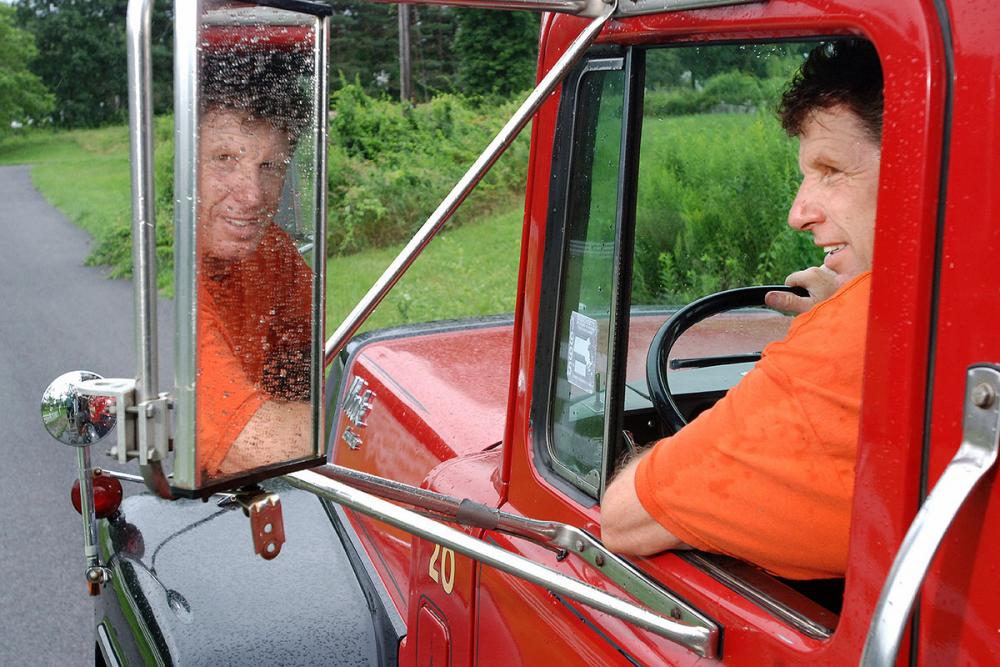
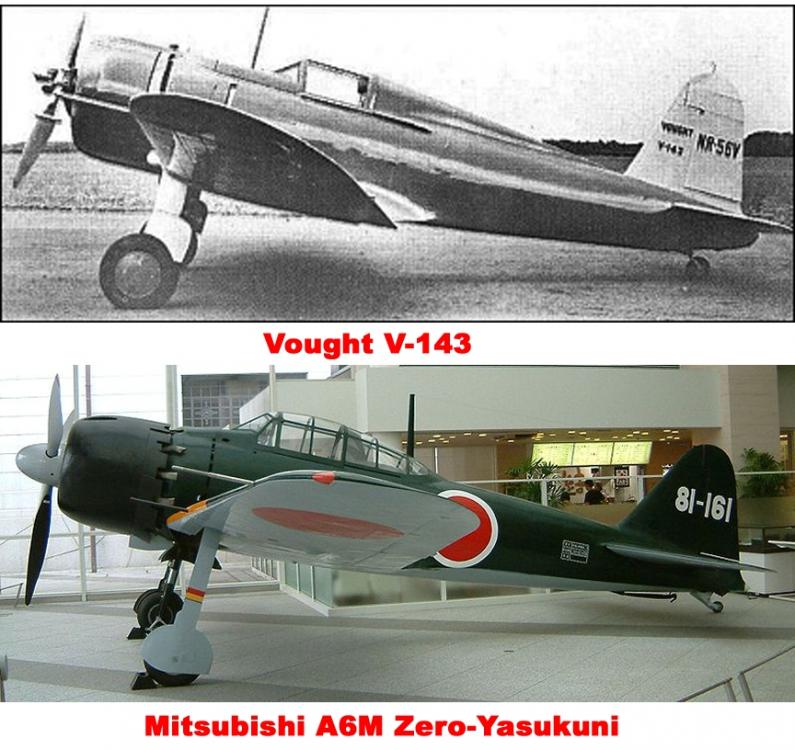
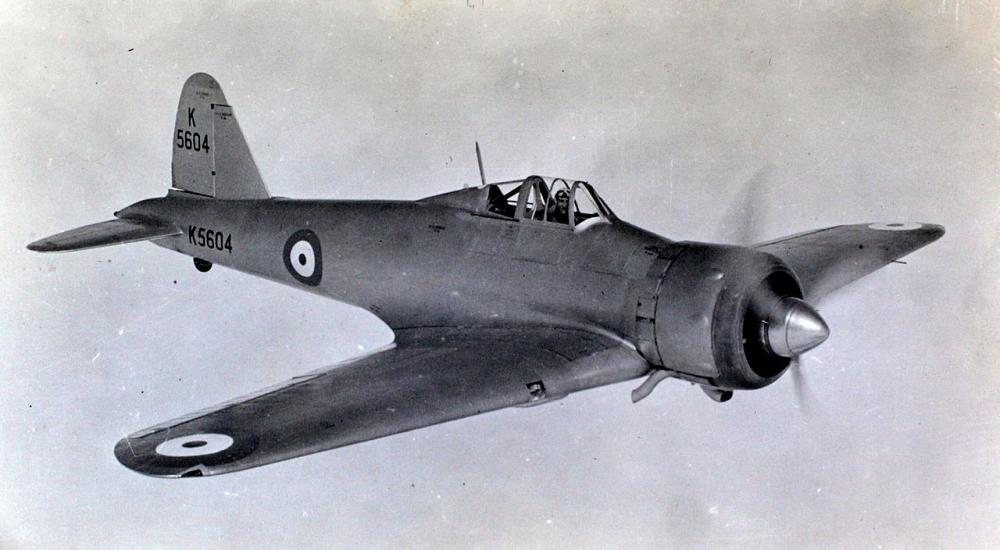
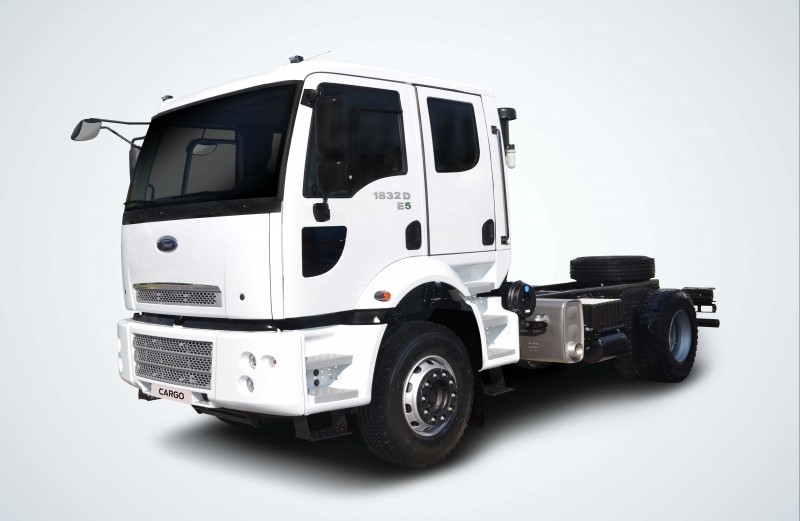
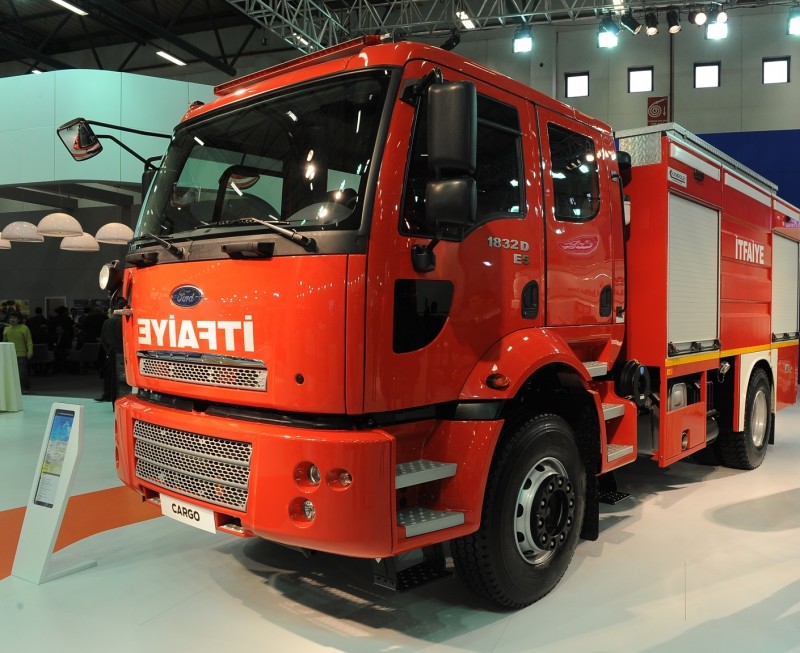
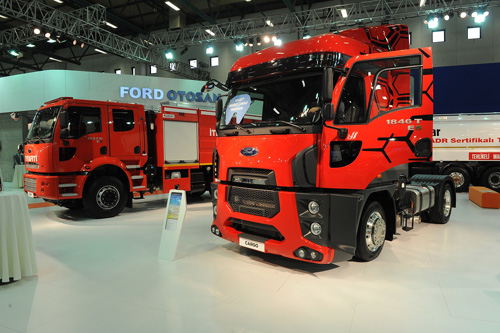
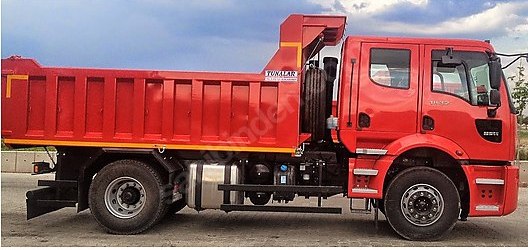
.thumb.jpg.1366bb113bfcdefc57cd29636c907084.jpg)
.thumb.jpg.0b4f803bb145b9187ef29a5c753de3a5.jpg)

